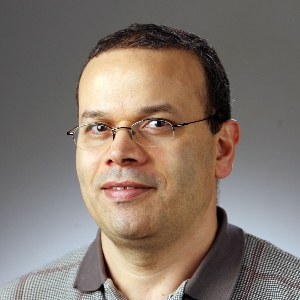This project was approved for funding by the DIPG/DMG Collaborative and The Cure Starts Now and here are the results:
Quote from Dr. Rachid Drissi:
“This is the first study to apply an approach combining magnetic resonance imaging (MRI) features and genomics in patients with DIPG in order to (1) investigate relationships between MRI characteristics at post-radiotherapy time points with tumor molecular profiles identified through extensive genome-wide sequencing analyses, and (2) further explore the radiographic, clinical, and biological heterogeneity of this disease. This study has begun elucidating relationships between post-radiotherapy radiographic response with DIPG molecular profiles, revealing radiogenomically distinct subgroups with unique clinical trajectories and therapeutic targets.
We are very aware of the fact that without the support of the foundations like yours, not much can be achieved. Thank you again for the long-standing support which achieves two important things: raising the awareness and providing the research support. As a scientist, this exactly what I need to do my research.”
Abstract
An adequate understanding of the relationships between radiographic and genomic features in diffuse intrinsic pontine glioma (DIPG) is essential, especially in the absence of universal biopsy, to further characterize the molecular heterogeneity of this disease and determine which patients are most likely to respond to biologically-driven therapies. Here, a radiogenomics analytic approach was applied to a cohort of 28 patients with DIPG. Tumor size and imaging characteristics from all available serial MRIs were evaluated by a neuro-radiologist, and patients were divided into three radiographic response groups (partial response [PR], stable disease [SD], progressive disease [PD]) based on MRI within 2 months of radiotherapy (RT) completion. Whole genome and RNA sequencing were performed on autopsy tumor specimens. We report several key, therapeutically-relevant findings: (1) Certain radiologic features on first and subsequent post-RT MRIs are associated with worse overall survival, including PD following irradiation as well as present, new, and/or increasing peripheral ring enhancement, necrosis, and diffusion restriction. (2) Upregulation of EMT-related genes and distant tumor spread at autopsy are observed in a subset of DIPG patients who exhibit poorer radiographic response to irradiation and/or higher likelihood of harboring H3F3A mutations, suggesting possible benefit of upfront craniospinal irradiation. (3) Additional genetic aberrations were identified, including DYNC1LI1 mutations in a subgroup of patients with PR on post-RT MRI; further investigation into potential roles in DIPG tumorigenesis and/or treatment sensitivity is necessary. (4) Whereas most DIPG tumors have an immunologically “cold” microenvironment, there appears to be a subset which harbor a more inflammatory genomic profile and/or higher mutational burden, with a trend toward improved overall survival and more favorable radiographic response to irradiation, in whom immunotherapy should be considered. This study has begun elucidating relationships between post-RT radiographic response with DIPG molecular profiles, revealing radiogenomically distinct subgroups with unique clinical trajectories and therapeutic targets.


